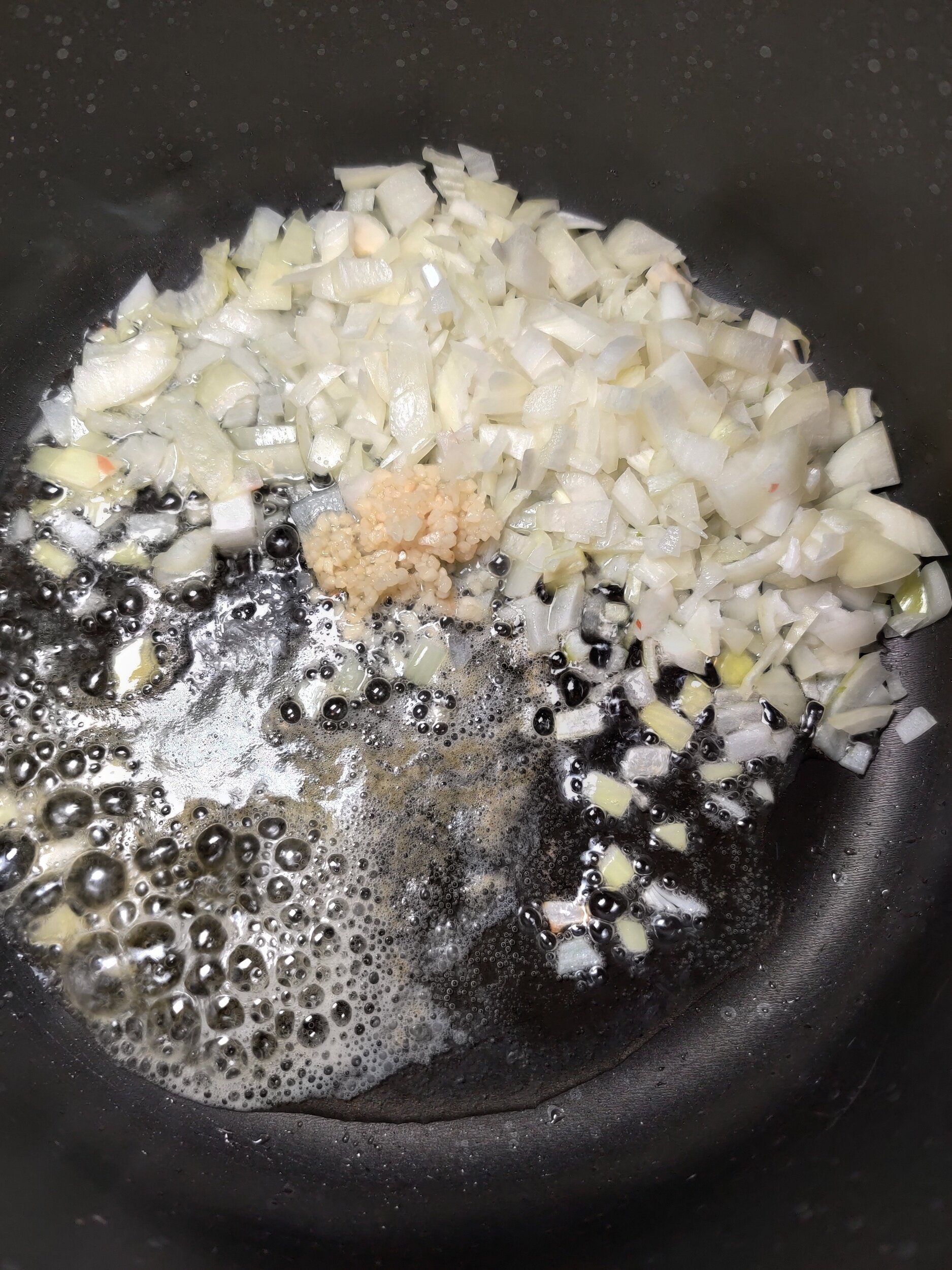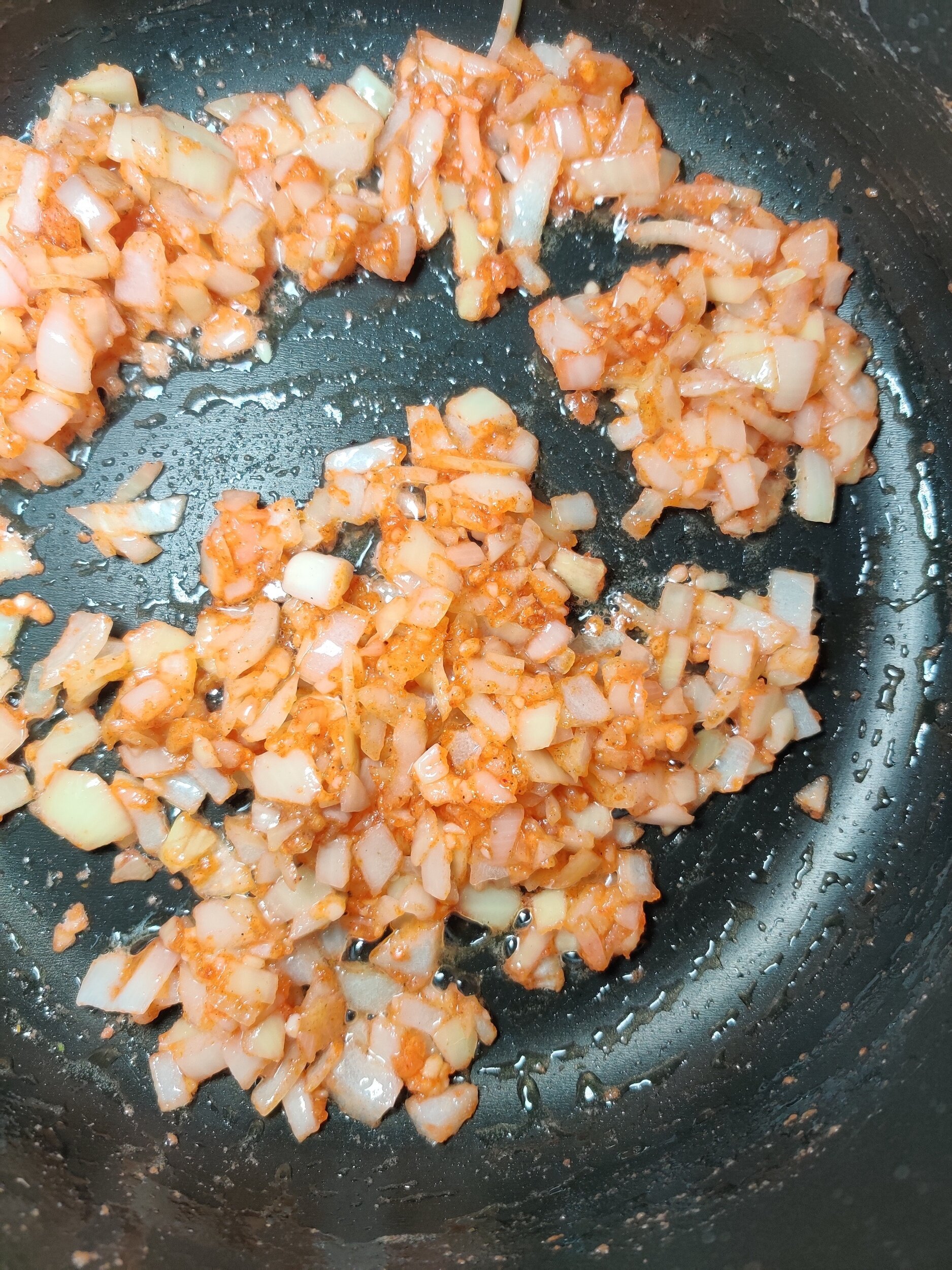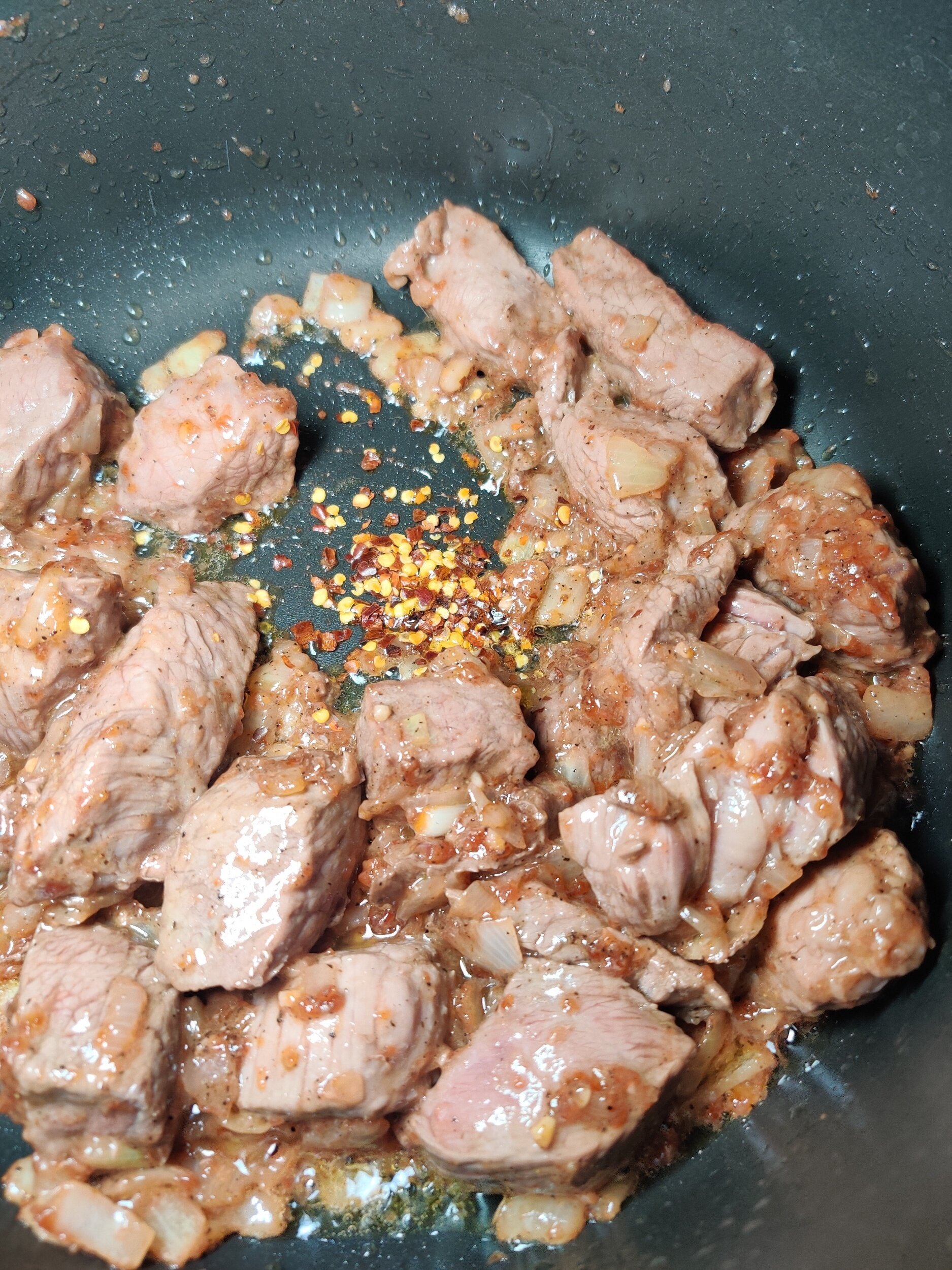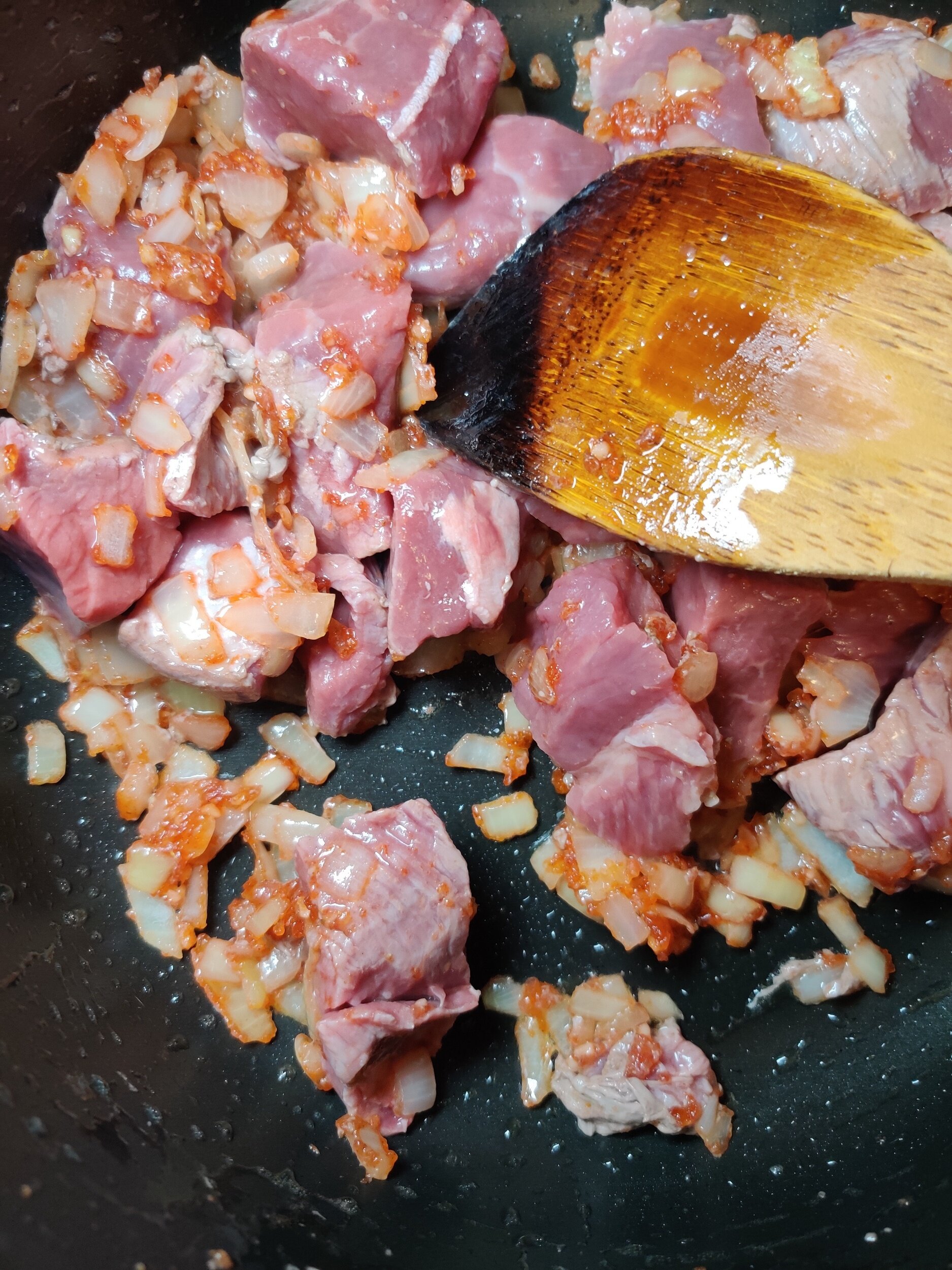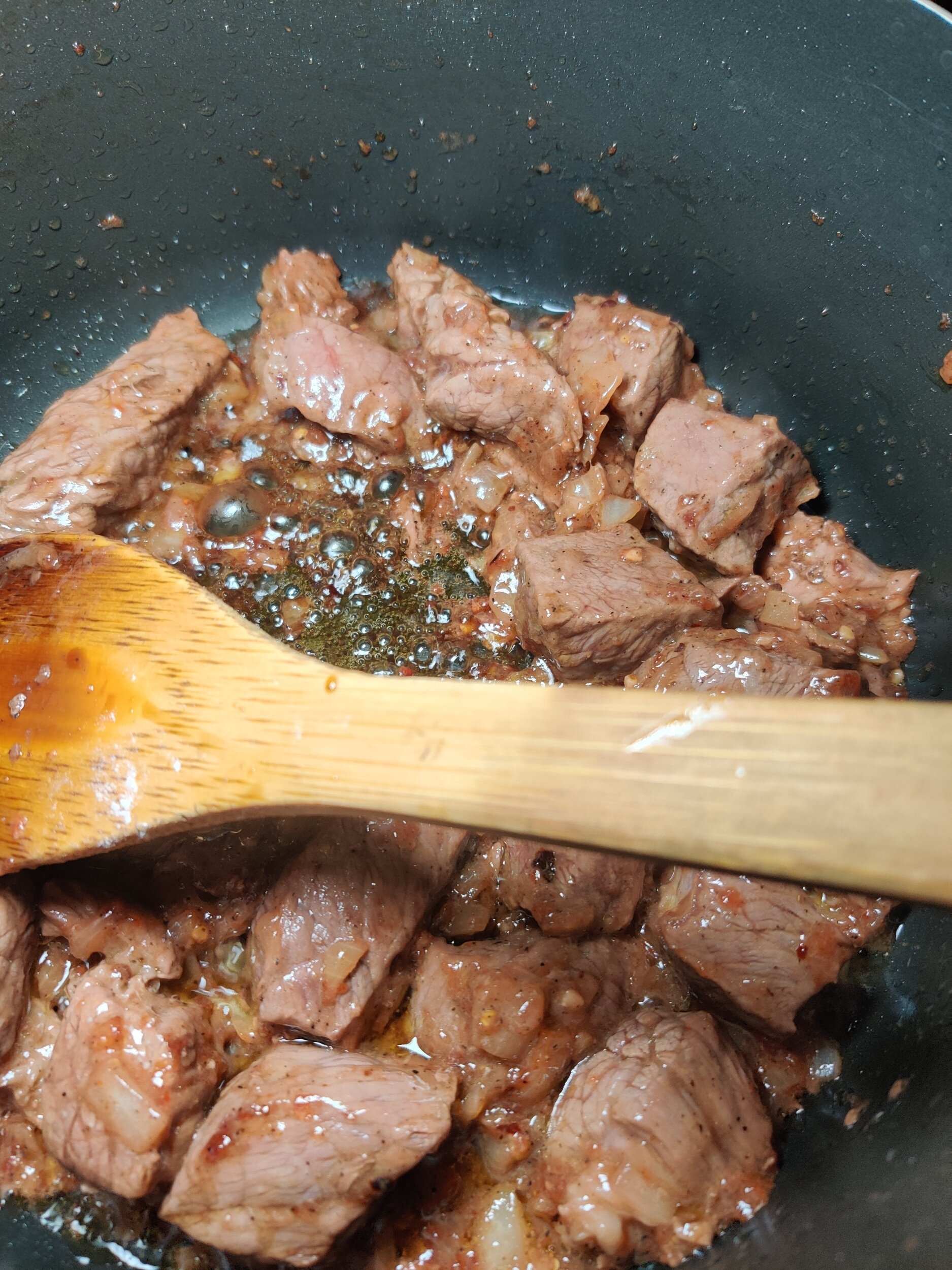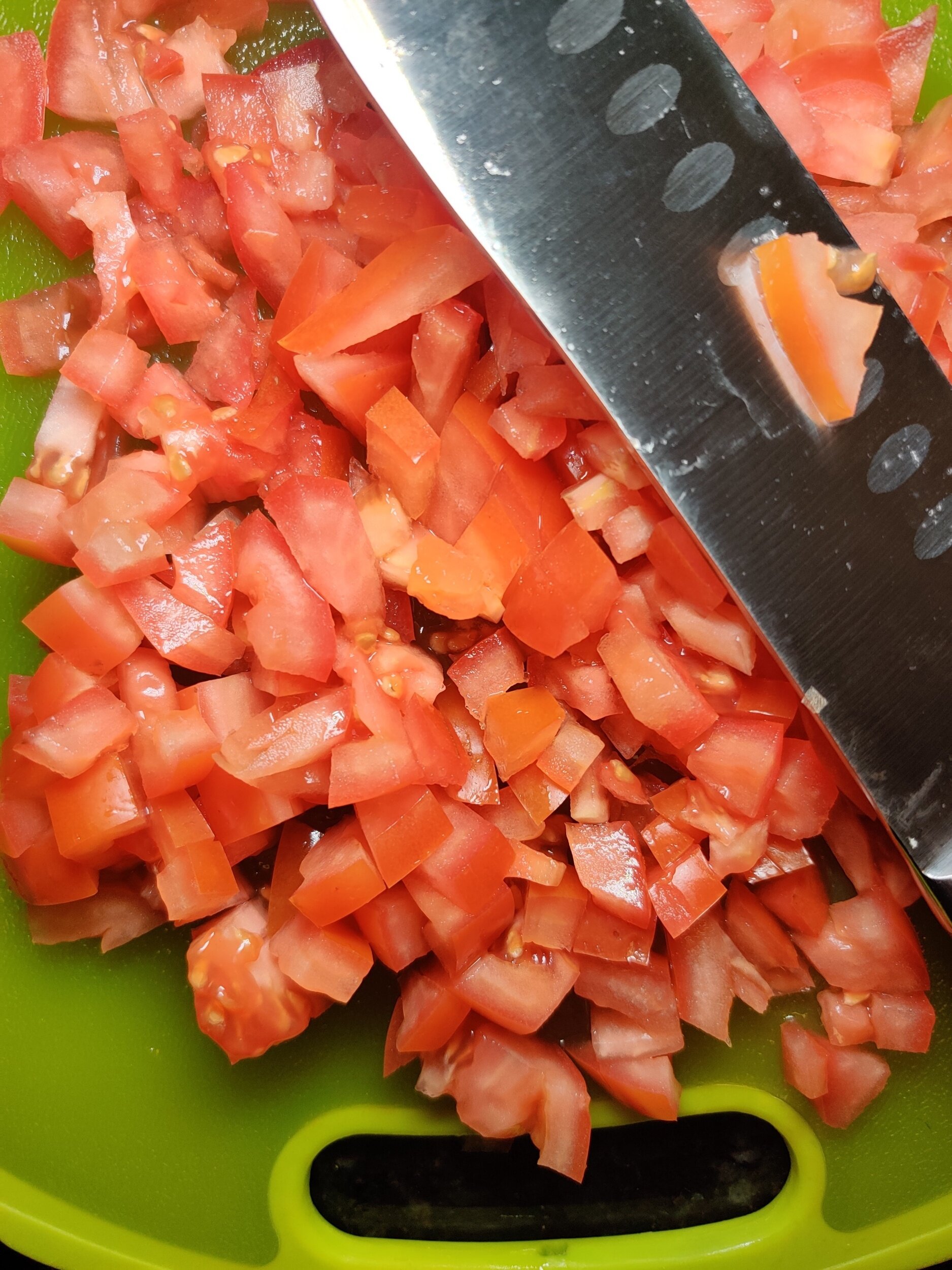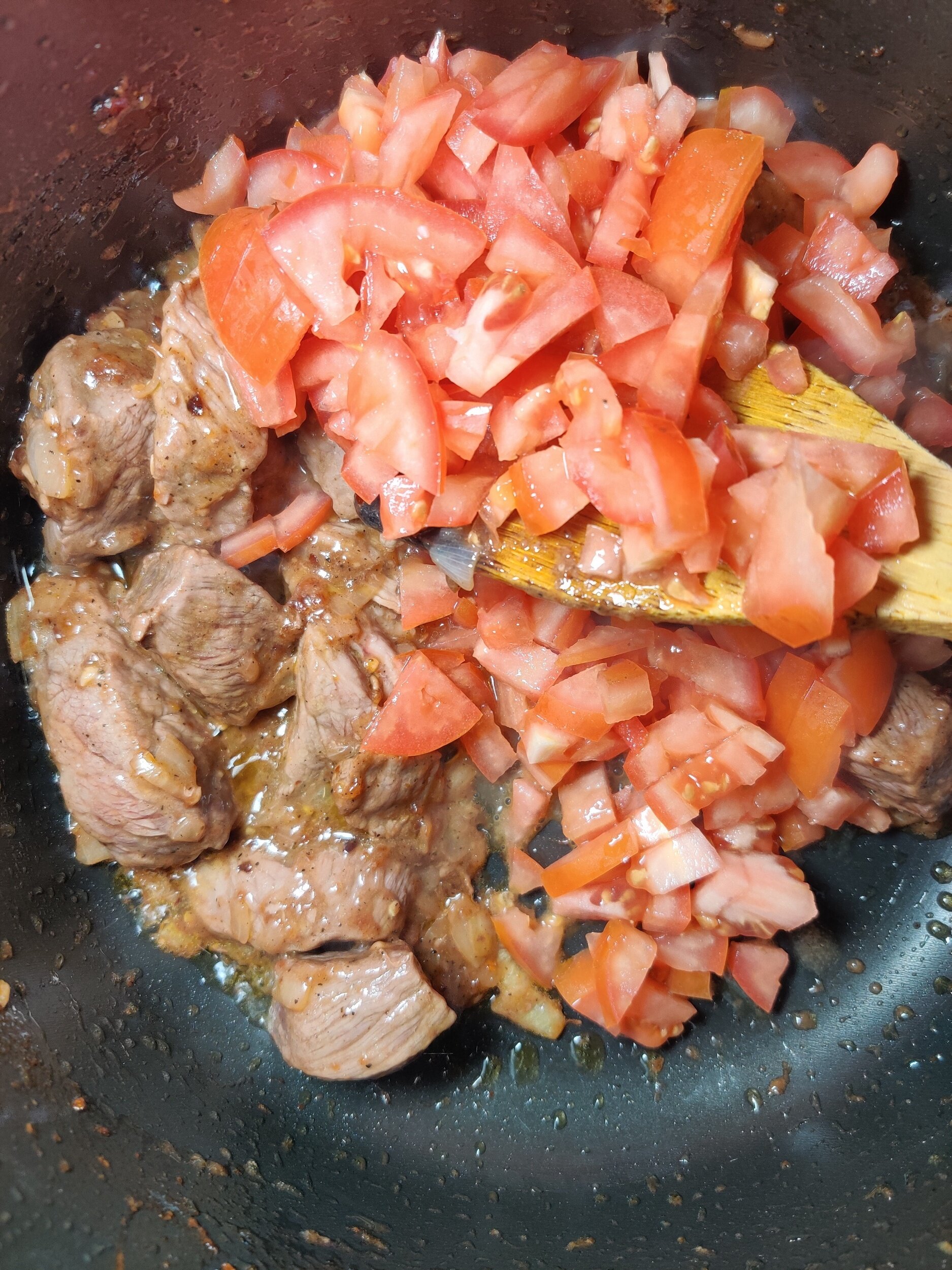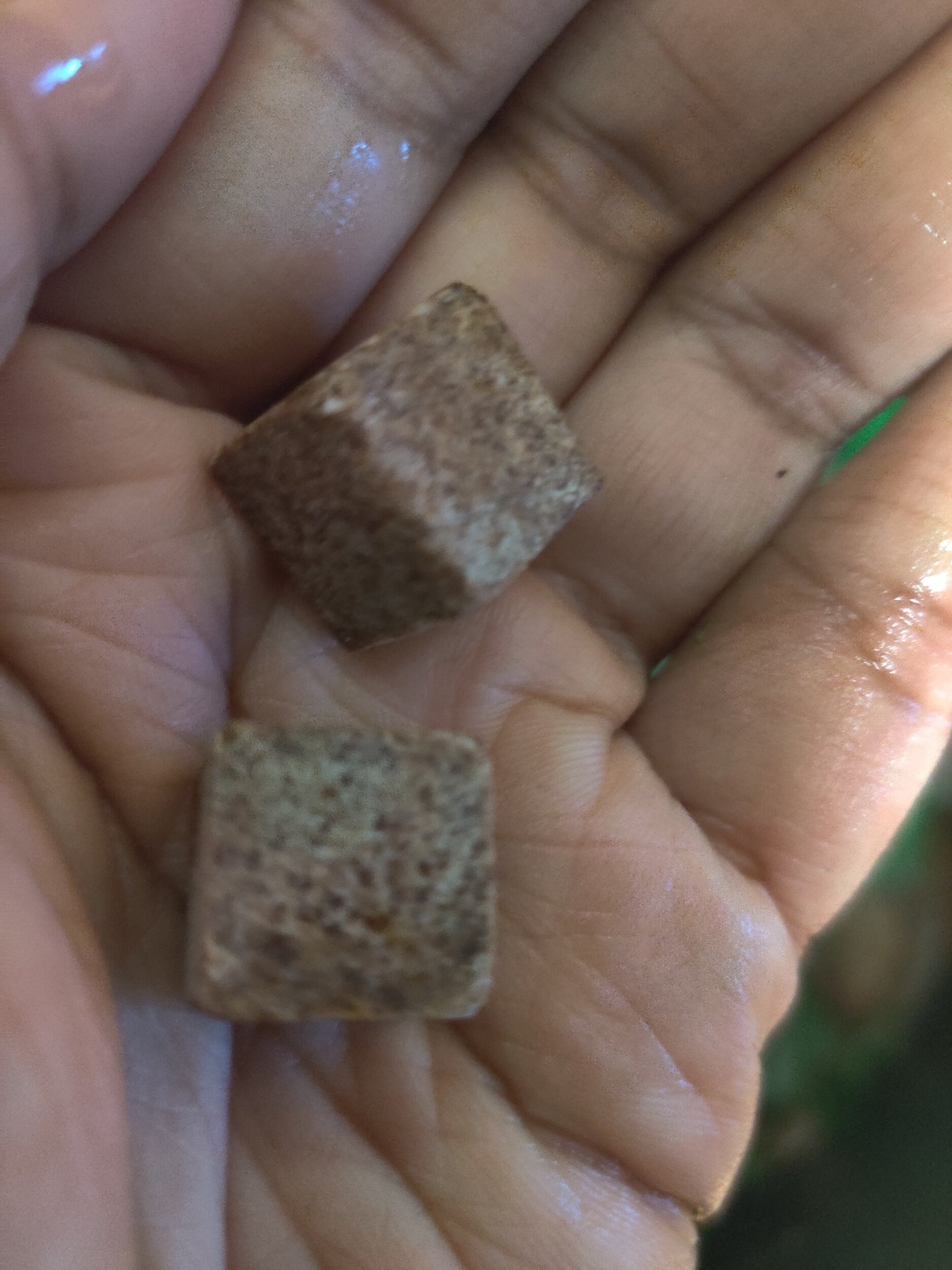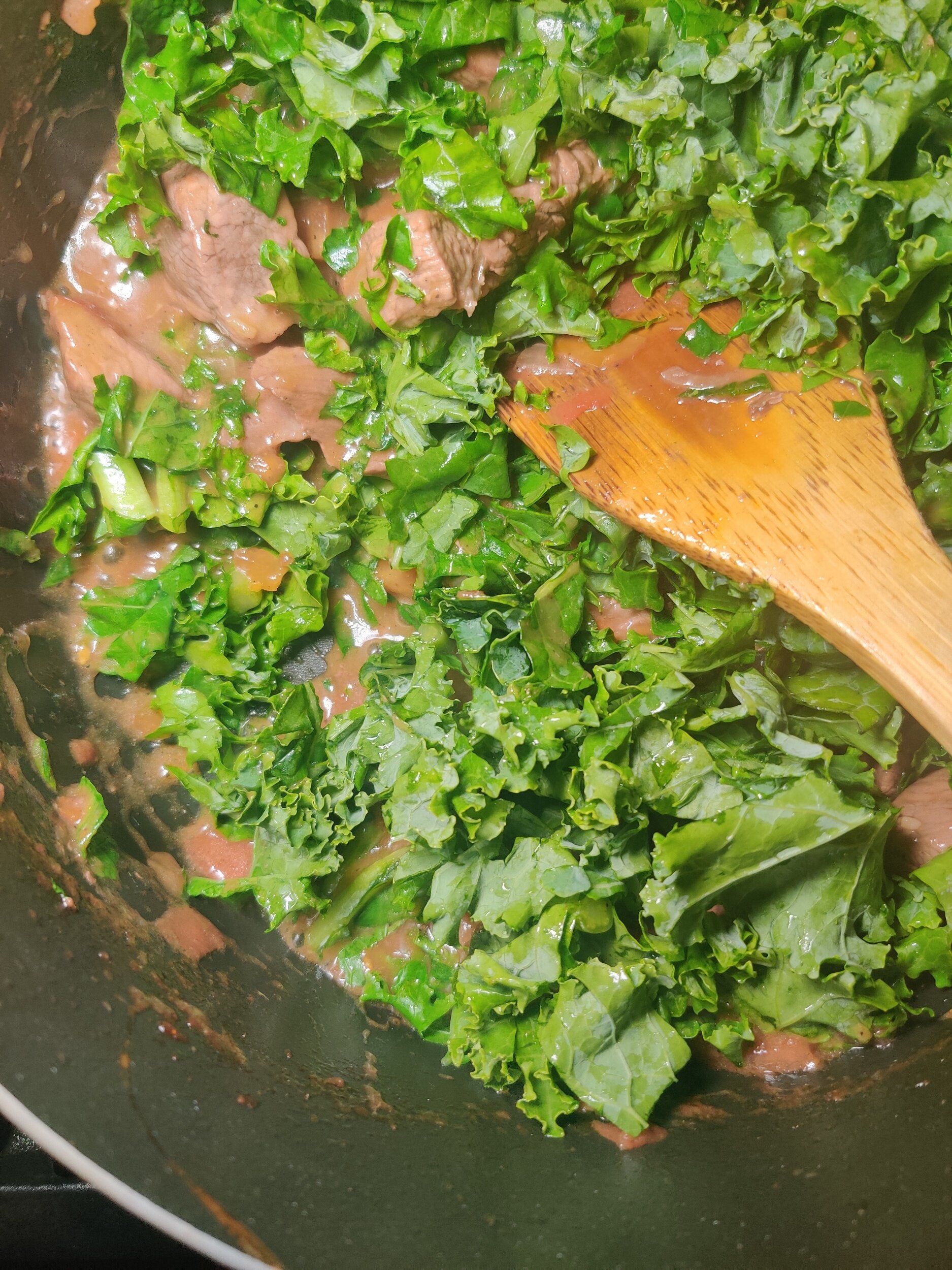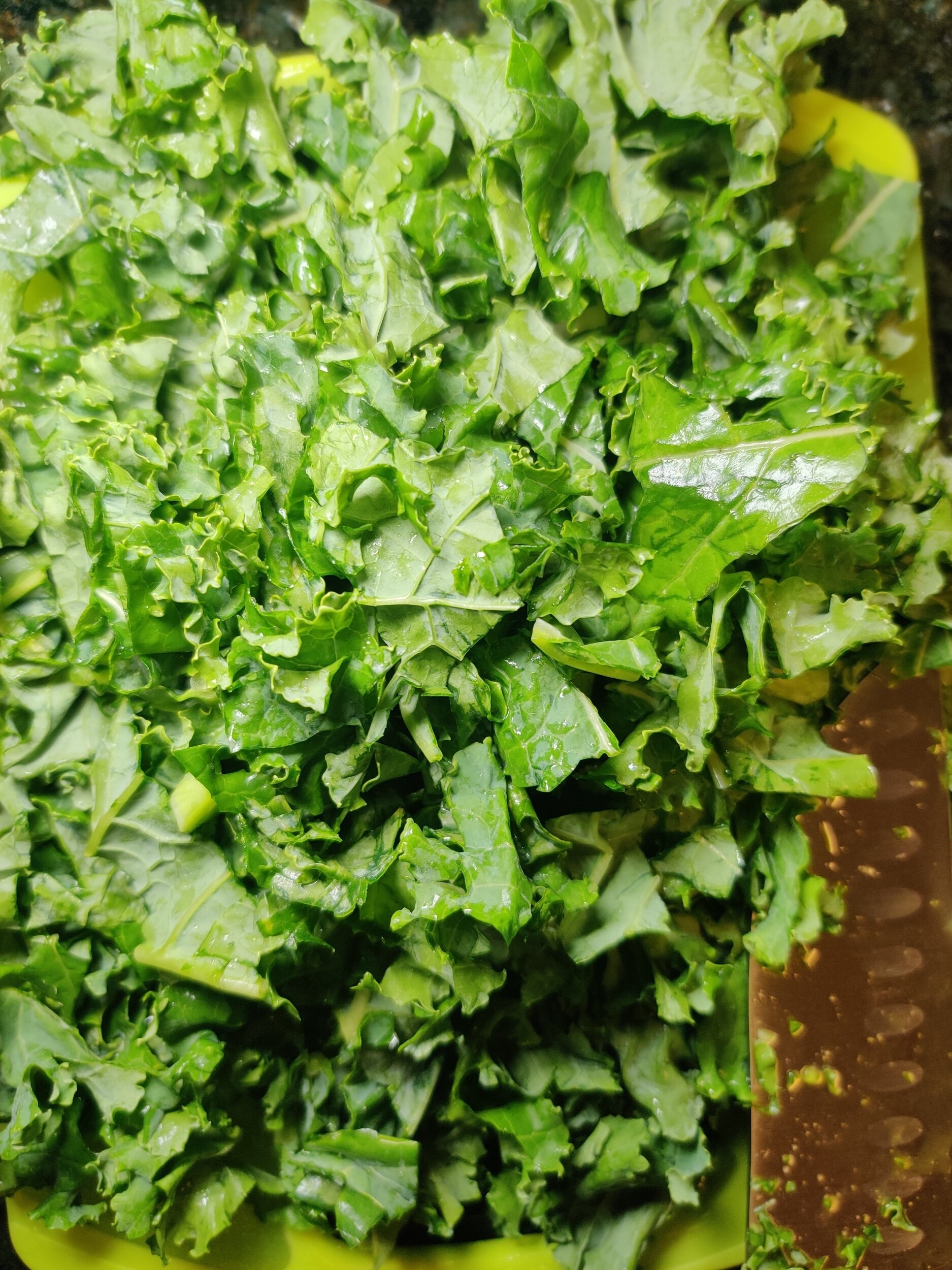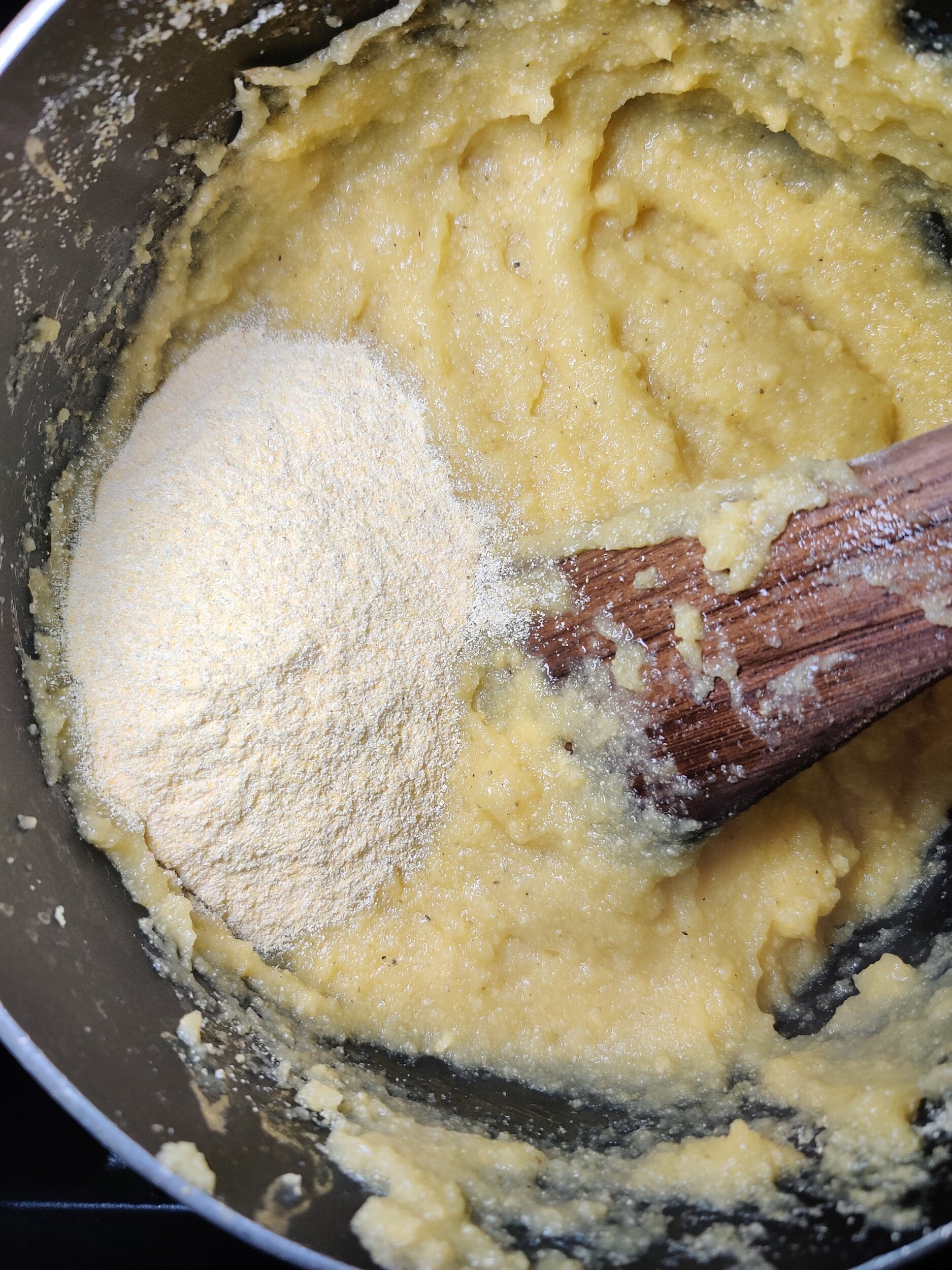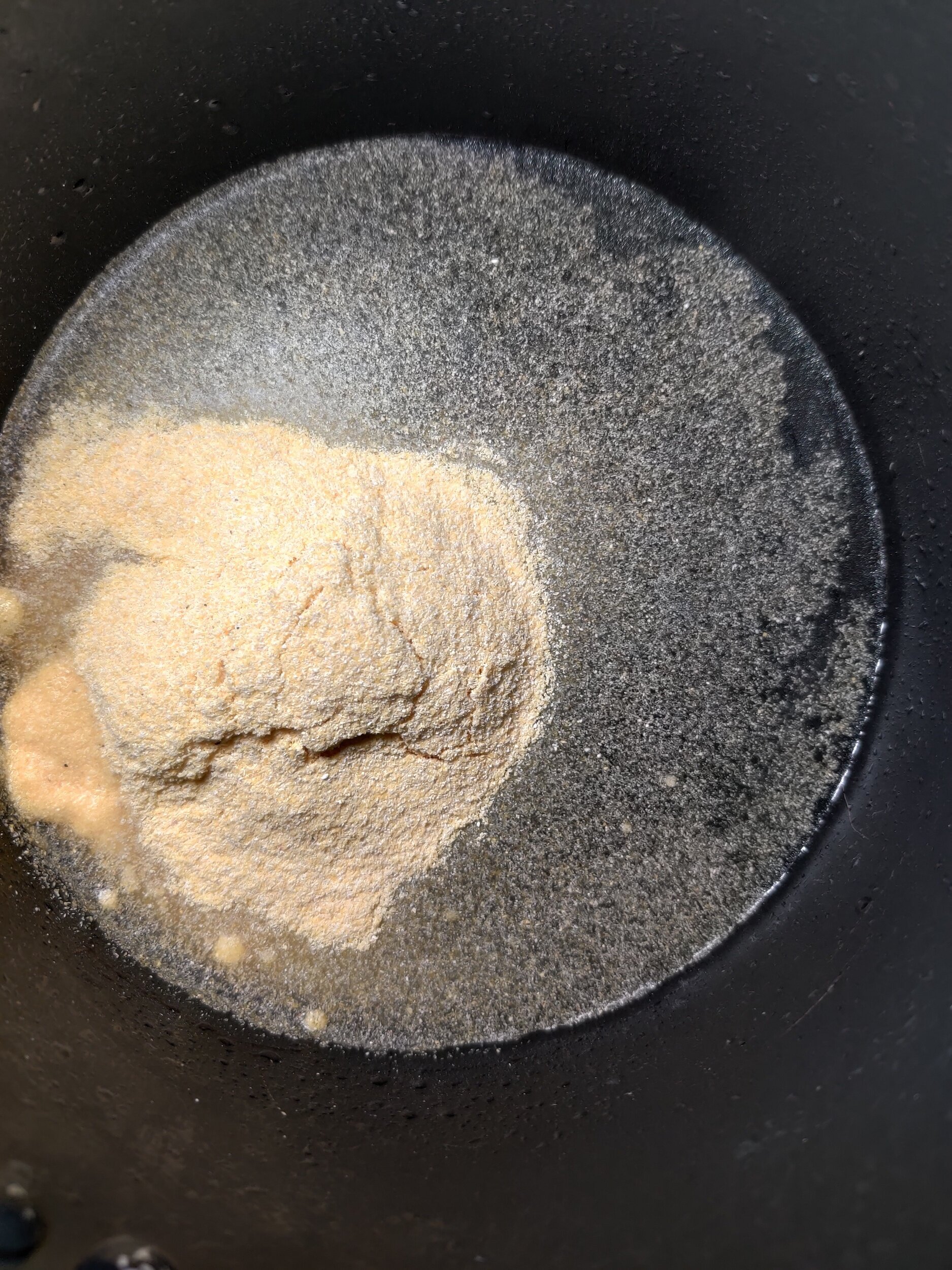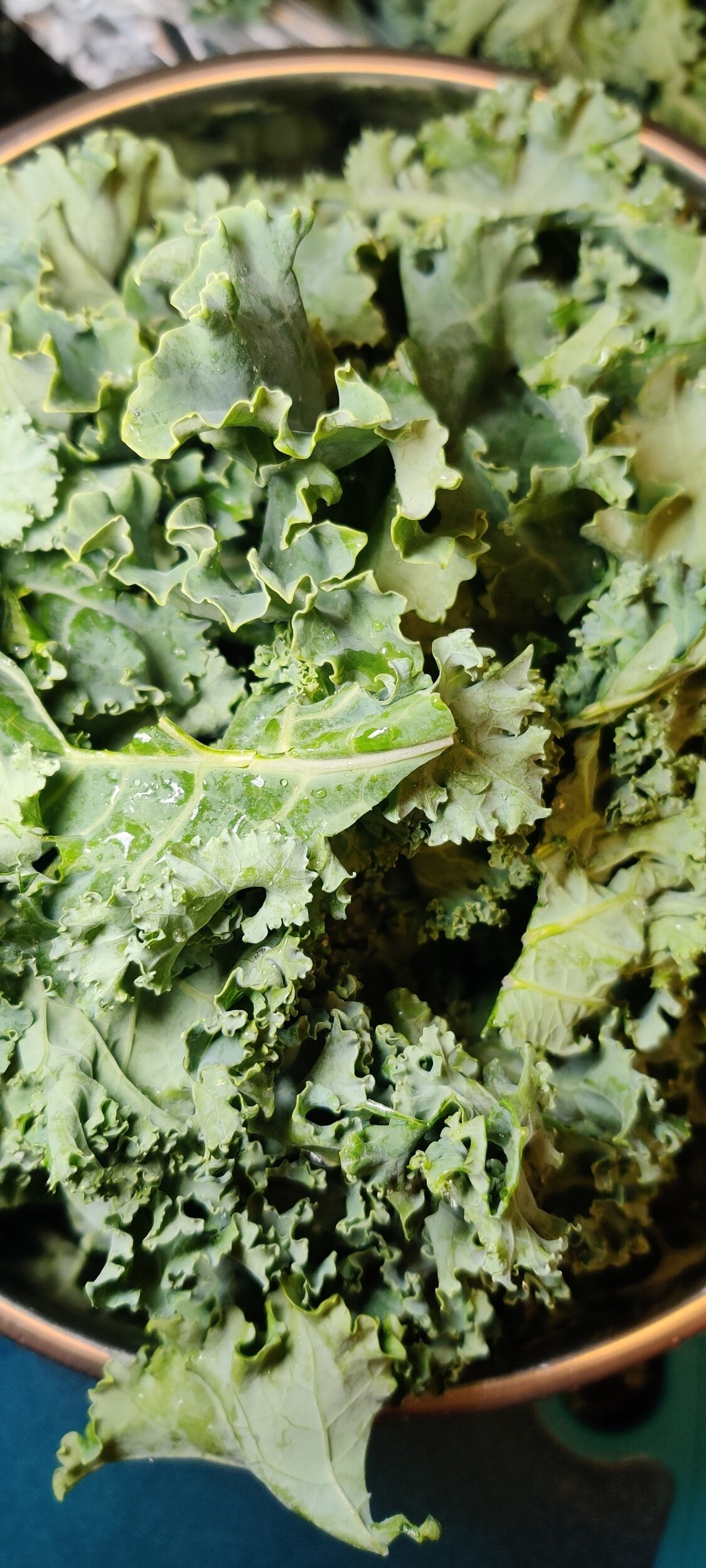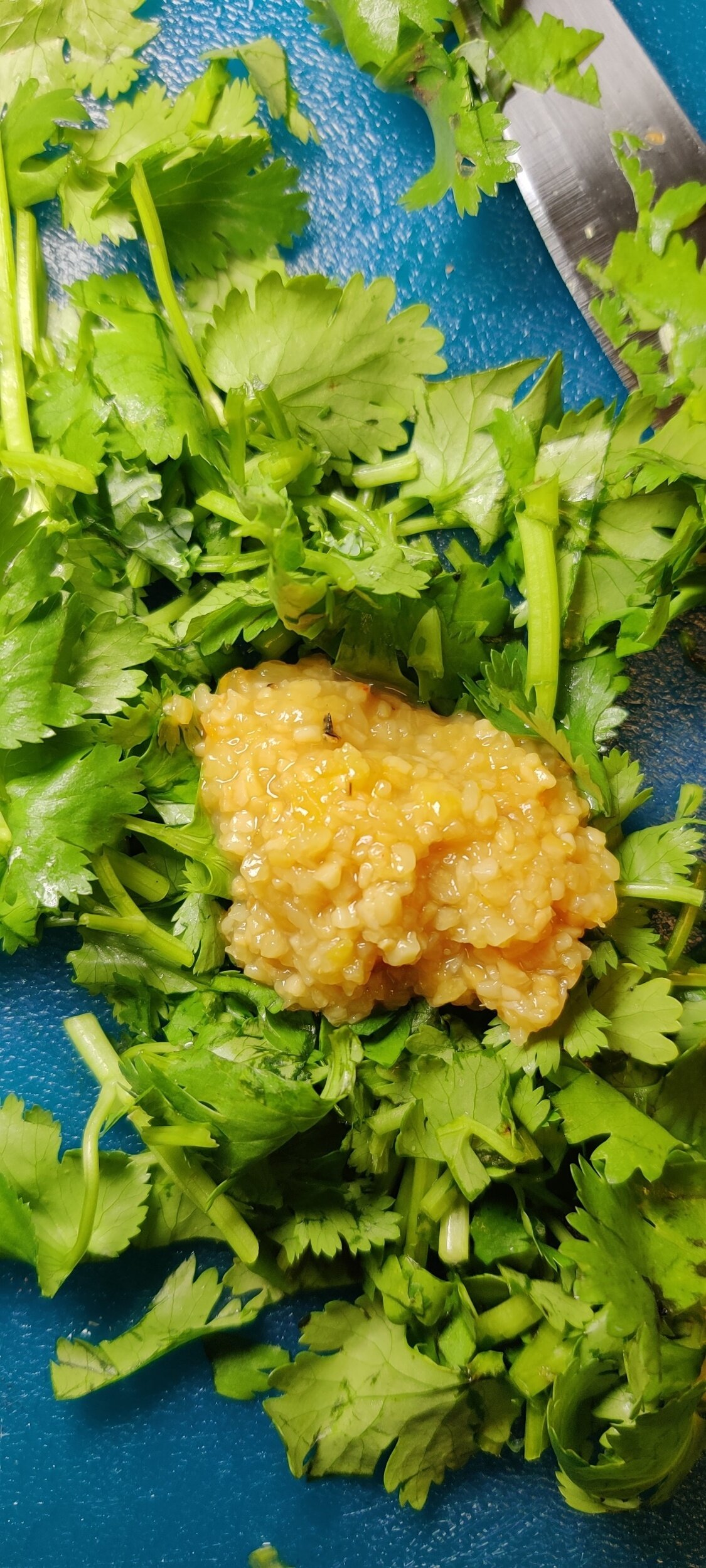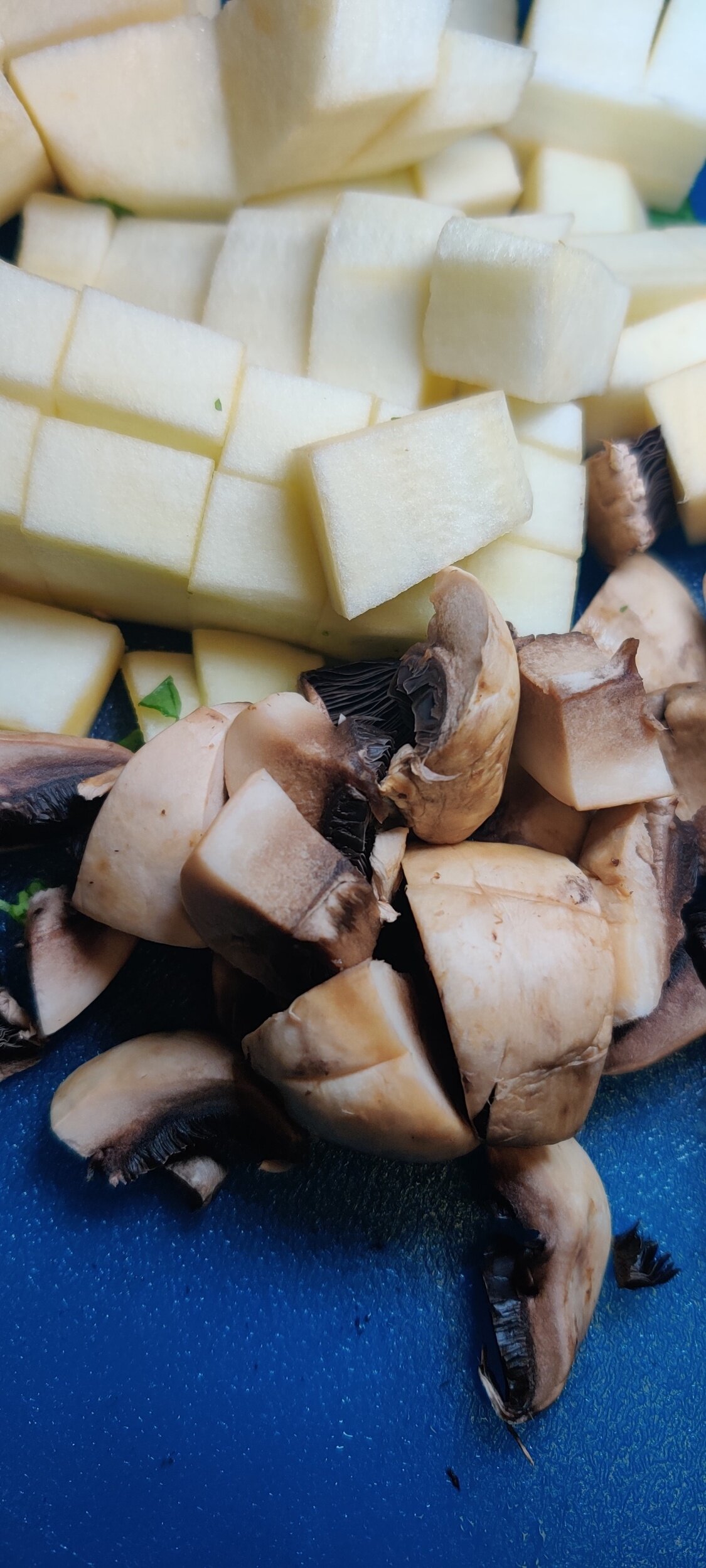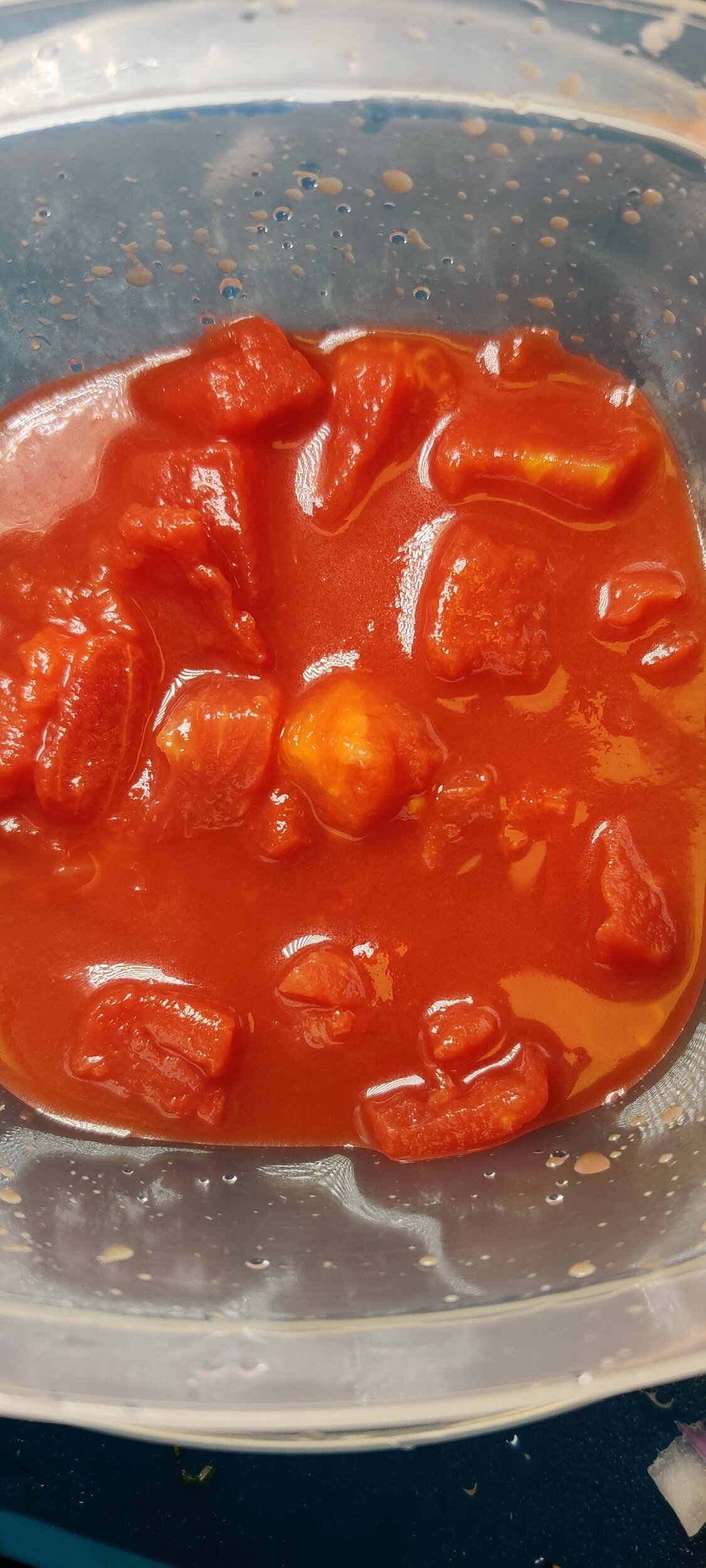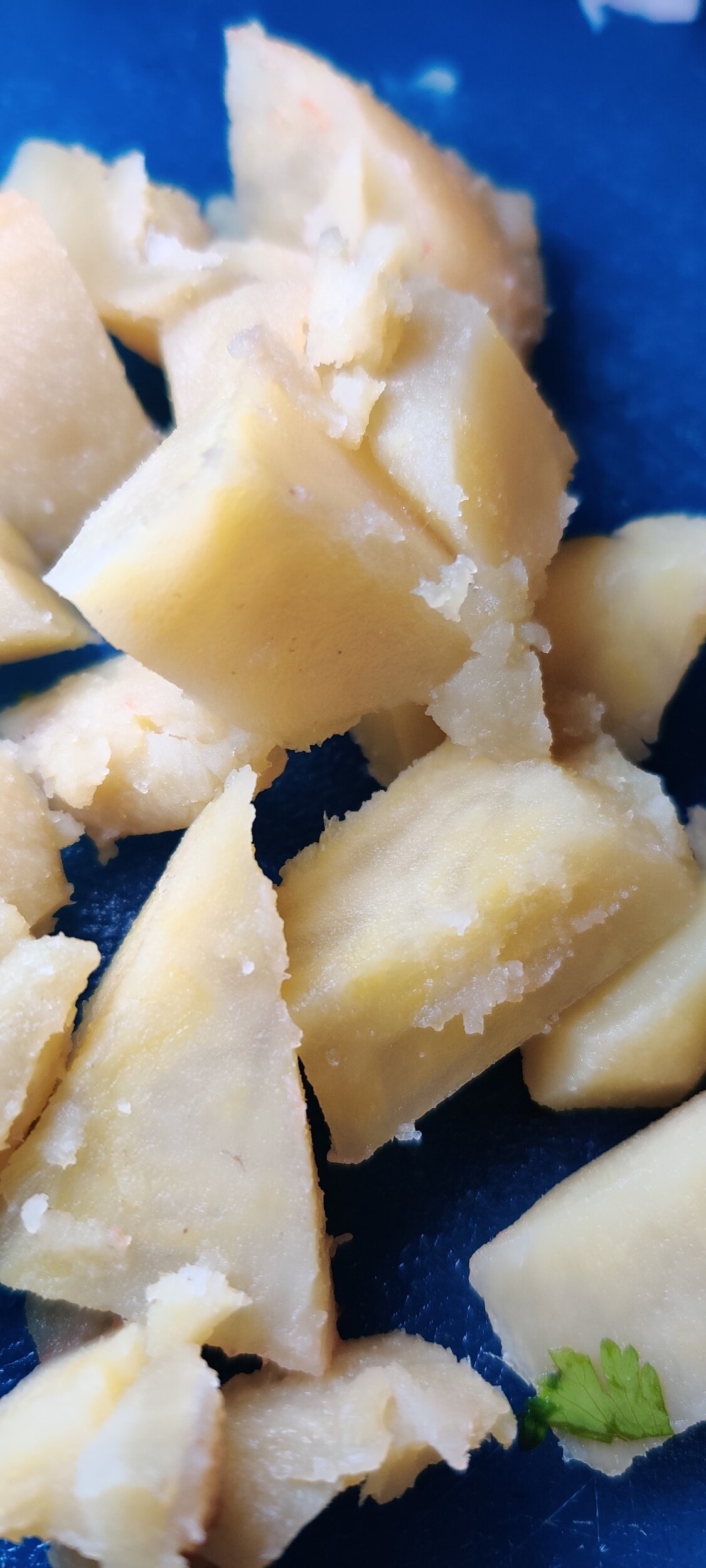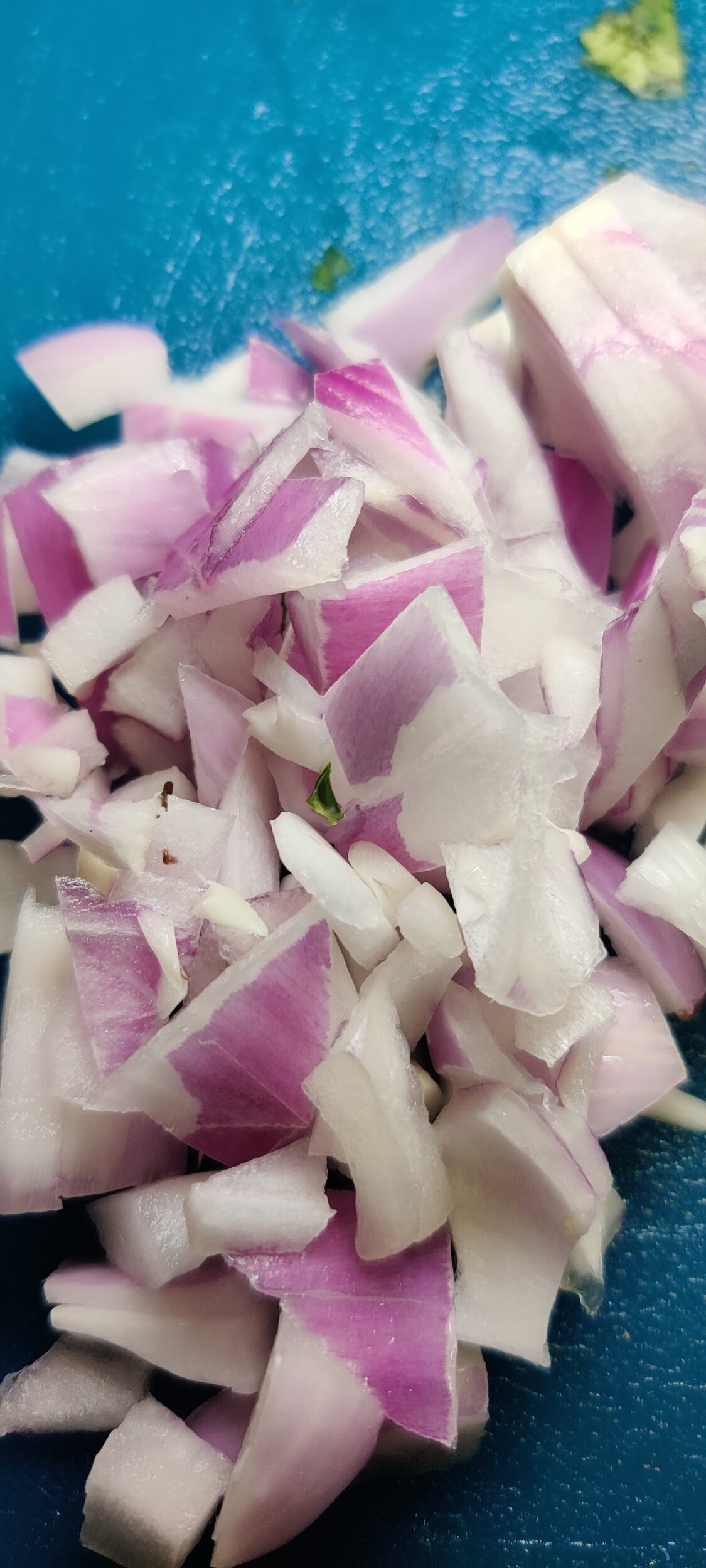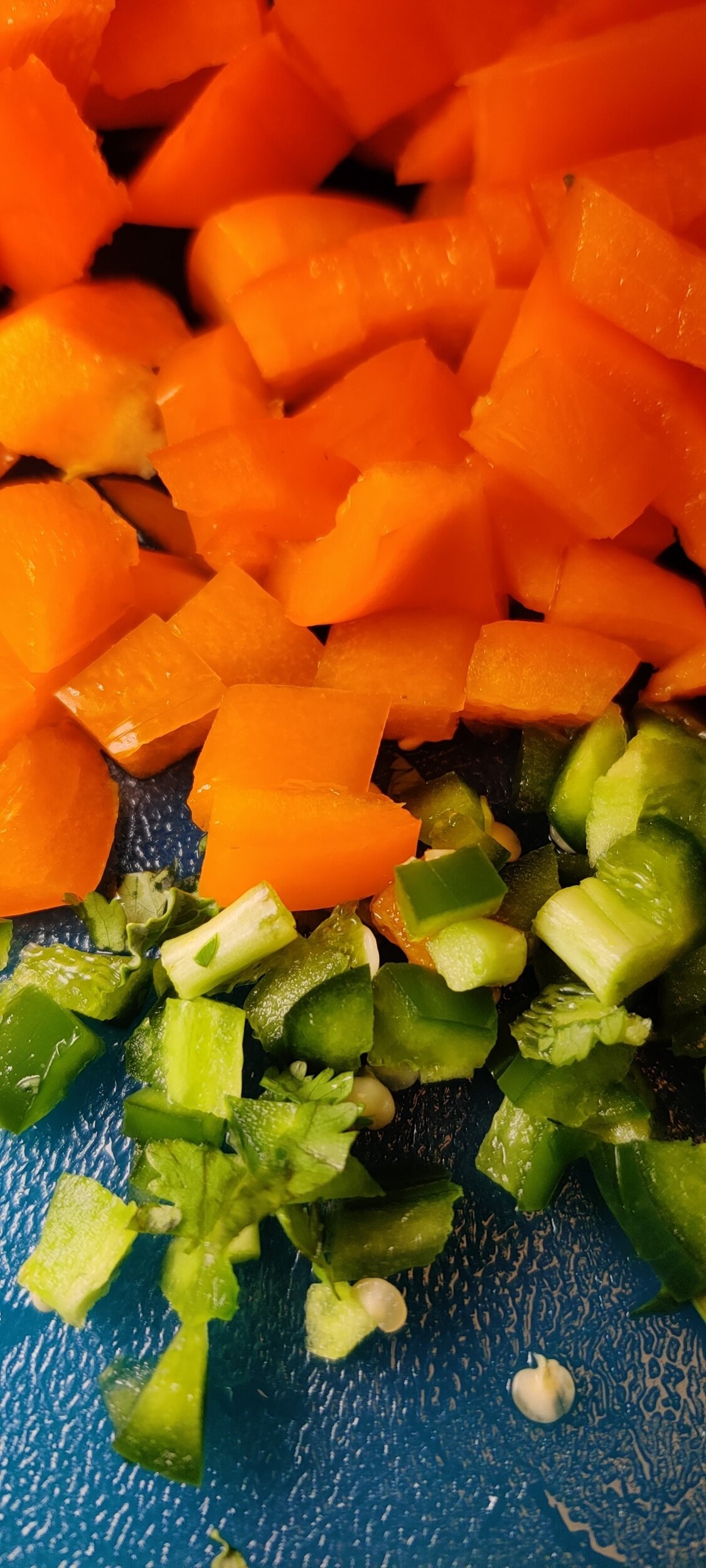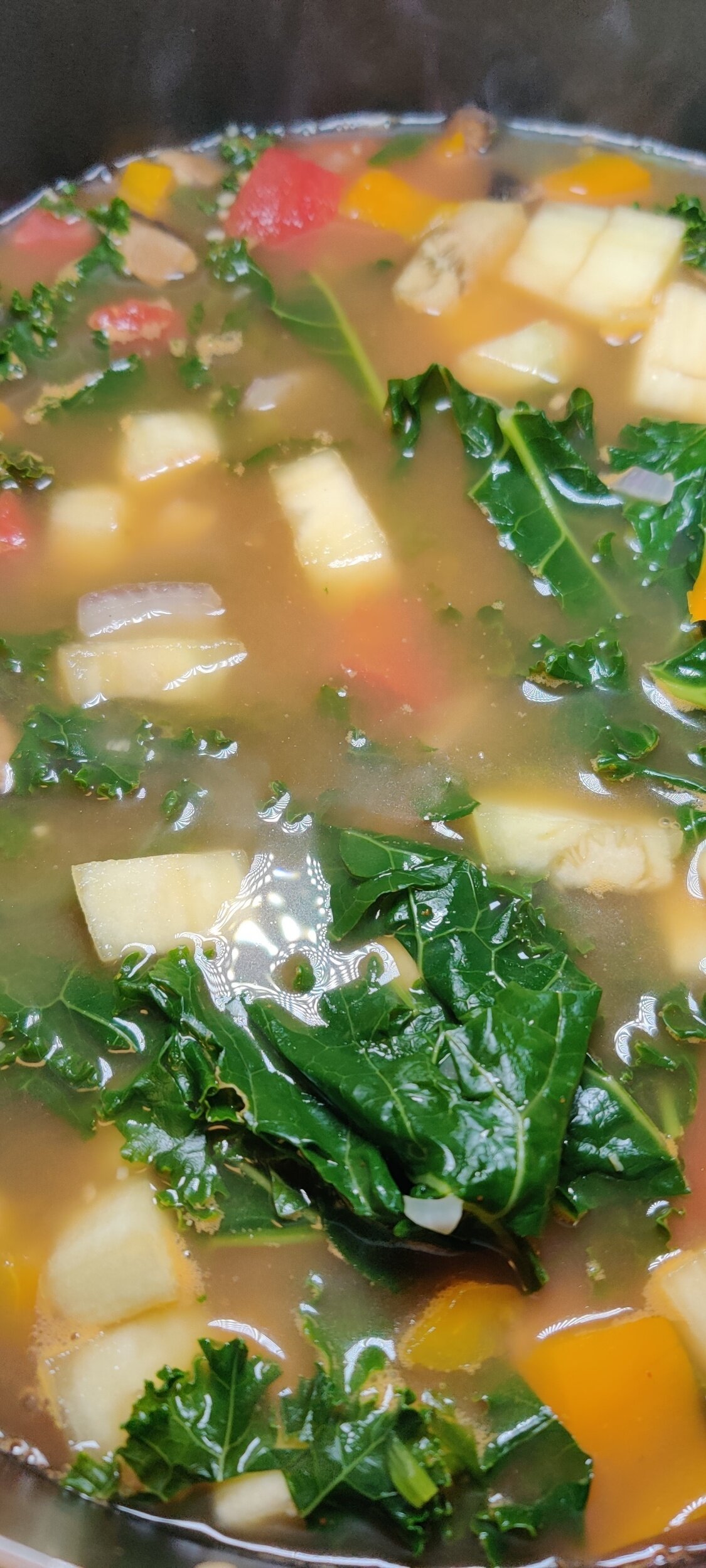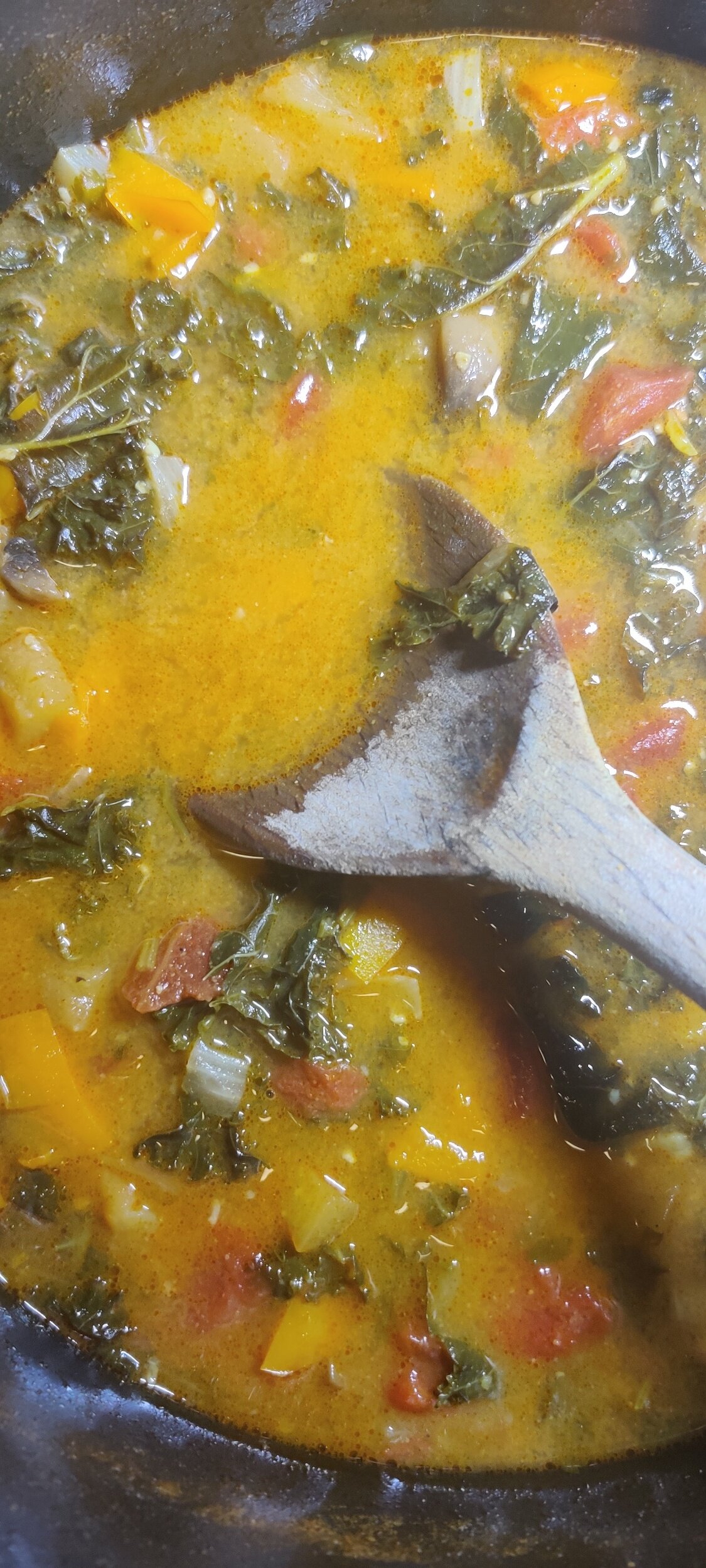Sadza Nenyama (Beef and Kale Stew)
Zimbabwean Sadza with Kale and Beef Stew: A Hearty African Comfort Food
If you're looking to explore authentic African cuisine, Zimbabwean sadza with kale and beef stew is a must-try dish that embodies comfort, tradition, and rich flavors. Sadza, a staple in Zimbabwean households, is a smooth, thick cornmeal porridge similar to fufu or pap, often served alongside flavorful stews. This hearty meal is deeply rooted in Zimbabwean culture and represents the essence of home-cooked comfort food.
In this recipe, tender beef chunks are slow-cooked in a savory, aromatic tomato-based stew, perfectly balanced with nutrient-packed kale. That said, bone-in cuts are more common for this dish, and, in my opinion, provide a more flavorful, rich broth to tie the entire meal together. The combination of rich, meaty flavors and wholesome greens pairs beautifully with sadza, creating a satisfying meal that warms the soul. Whether you have Zimbabwean roots or are simply looking to try something new, this dish is a delicious way to experience the heart of Southern African cuisine.
If there was any meal I got sick of eating as a kid, it was this. As an adult far from home, I found myself with a new-found appreciation, and wanted to share the steps to materialize the meal. While I’ve personally cut down on meat, this classic dish still brings comfort, warmth, and a taste of home, especially on cold or rainy days.
For more recipes inspired by traditional Zimbabwean, cuisine, browse the website or check out Oxtail and Butternut Stew, Fried Sadza with Chilli Creamed Corn, Sadza with Butter Bean Kale Relish, Sadza and Creamed Spinach with Sardines, Huku ne Dovi (Zimbabwean Peanut Chicken Stew), and Black-Eyed Peas with Coconut and Tomato.

Sadza Nenyama (Beef and Kale Stew)
Ingredients
- 1 pound chuck beef or cut ideal for stew
- 1/2 large bunch kale, chopped
- 1 tablespoon butter
- 2 tablespoons vegetable oil
- 1 teaspoon salt
- 1 tablespoon black pepper
- 3 tablespoons Royco Usavi Mix (optional but highly recommended - you can also use a blend of 1 teaspoon cumin, 1 teaspoon coriander, 1/2 teaspoon turmeric, 1/4 teaspoon paprika, 1/4 teaspoon cornstarch, and 1/2 teaspoon fenugreek powder)
- 1 yellow onion, diced
- 3-4 Roma tomatoes, diced
- 1 tablespoon fresh garlic
- 1 tablespoon chili flakes
- 3 beef or vegetable bouillon cubes
- 3 cups water
- 1 1/2 - 2 cups cornmeal/mealie meal (I used yellow cornmeal)
- 1 teaspoon salt
- 3 cups boiling water
- 3/4 cup cold water
- 1 teaspoon garlic powder
Instructions
- Prepare your stew. In a large pot, add the butter and vegetable oil. Sauté the onion and garlic until the onion becomes translucent and the garlic fragrant, about 3-4 minutes. Add the salt, pepper, and spice blend, cook for another 2-3 minutes.
- Add the beef chunks and chilli flakes, brown the meat by cooking for about 5-7 minutes. Add the diced tomato and bouillon cubes, mix to incorporate.
- Add the chopped kale, followed by water (or liquid broth if you're using that). Reduce the heat and simmer for 30 minutes with the lid on top, stirring occasionally and seasoning to taste. You want your beef tender and cooked through, but not tough - so don't overcook.
- While the stew is cooking, make you sadza. Boil the water.
- In a medium-sized pot, stir 1/2 cup of the cornmeal with the cold water to make a paste (not too thick, not too thin).
- Season, then while stirring, add the boiling water - careful not to splash yourself! The heat should be on medium as your stir. After about 4-5 minutes, the cornmeal will begin to bubble. You can close the pot with the lid, and allow it to cook for about 15-20 minutes. Don't burn the bottom of your pot - you may need to reduce the heat to medium-low depending on your stove!
- Bring down the heat to low, and add the remaining cornmeal a 1/2 cup at a time, folding it in to make a soft dough - the softer you want the sadza the less cornmeal, for a thicker consistency use more . Place the lid back on the pot, leaving a slight opening, allowing the sadza to rest over the heat for about five minutes.
- Remove from heat and shape with a wooden spoon. Serve hot with the stew.
Notes
- For vegetarian alternative, use butternut or pumpkin cubes instead of beef.
- Sadza tastes better eaten hot, so try to serve immediately, storing until the next day hardens it. Consume the stew within 3-4 days when refrigerated, otherwise, freeze.
I am not a certified nutritionist and any nutritional information on dontmissmyplate.com should only be used as a general guideline.
Tried this recipe? I’d really love to know how it turned out for you. Leave a quick review or comment below — your feedback helps others (and makes my day!).
East African Mashed Kale Stew (Sukuma Wiki) with Chapati
This dish is inspired by one of East Africa’s most beloved comfort foods: Sukuma Wiki, a flavorful sautéed kale or collard green dish often served with chapati or ugali. Common across countries like Kenya, Uganda, and Tanzania, Sukuma Wiki is a simple, affordable way to stretch meals, the name literally means “stretch the week” in Swahili.
I’ve taken that foundation and turned it into a heartier, stew-like version by adding peanut butter, yam, mushrooms, and eggplant for extra richness. This version leans into bold spices and a creamy texture, making it filling enough to enjoy as a main dish.
While this stew draws heavily from Sukuma Wiki, I was also inspired by other traditions across the continent. In Zimbabwe, pumpkin leaves (muboora) are cooked with peanut butter to create a deeply savory side or main. They’re often overlooked, but when cooked right, they're just as good as kale or collard greens. Since I’m currently in the United States, I’ve used kale (muriwo) as a substitute, it’s readily available and holds up beautifully in stews.
In Rwanda, a dish called isombe uses ground cassava leaves stewed in a similar way, often served with plantains and, of course, chapati, my favorite flatbread of all time.
I’ve paired this stew with East African chapati, which is soft, flaky, and layered. It’s made differently from Indian chapati, using a coiled rolling technique that creates those signature flaky layers. You can find my chapati recipe [here] if you’d like to make it from scratch.
This dish is warm, deeply nourishing, and full of flavor. It’s a beautiful mix of traditions and ingredients that come together to celebrate African cooking in a way that’s comforting and easy to recreate at home.
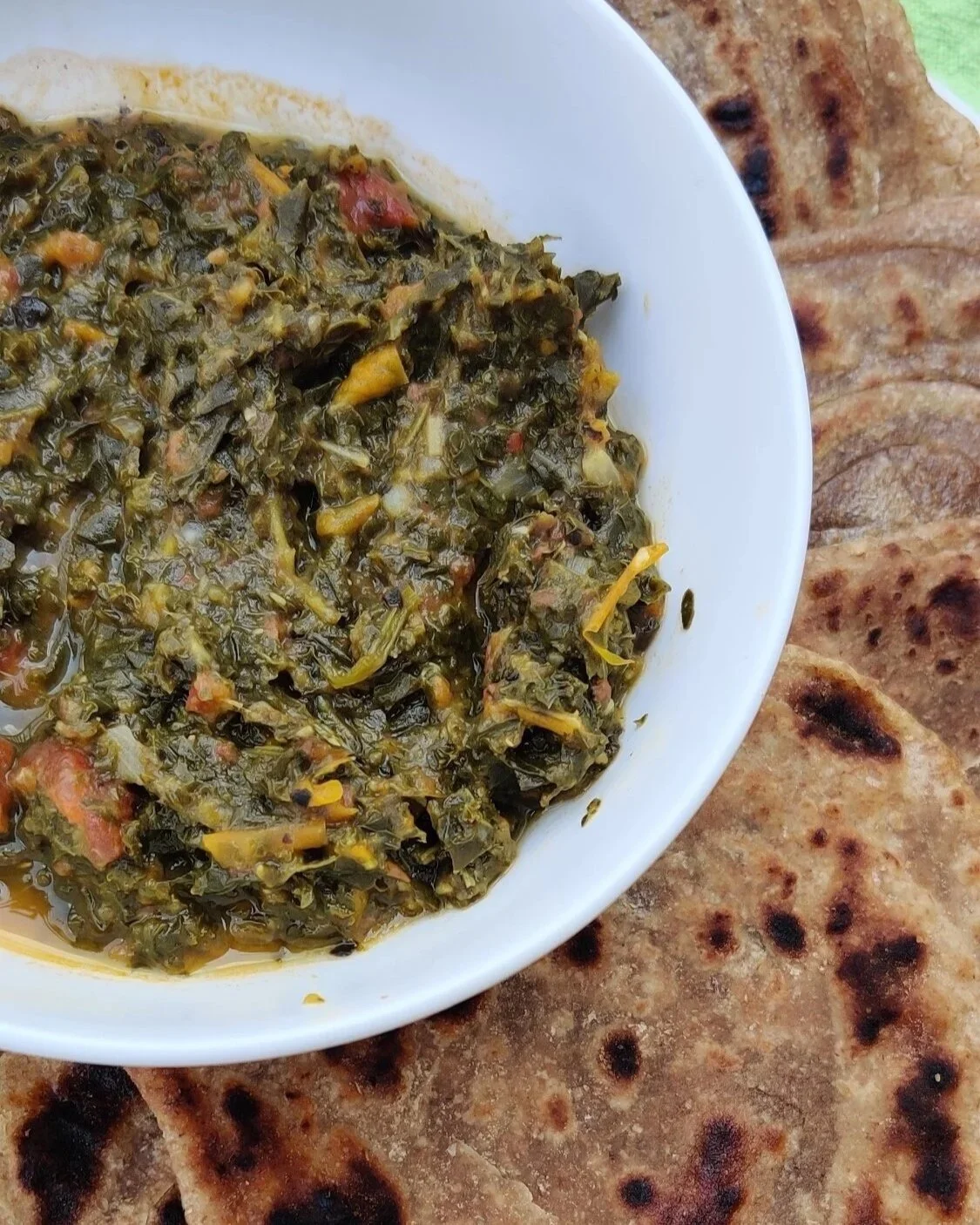
East African Mashed Kale Stew (Sukuma Wiki) with Chapati
A hearty, comforting East African-inspired kale stew packed with vegetables, spices, and richness from peanut butter. Serve with chapati for a complete meal.
Ingredients
- 1 pound kale, chopped
- 2 tablespoons garlic, minced
- ¼ cup fresh parsley, chopped
- ½ large eggplant, chopped
- ½ cup mushrooms, chopped
- 1 large tomato or 1 (14-ounce) can diced tomatoes
- ½ white-fleshed yam or sweet potato, chopped
- ½ large onion, chopped
- ½ large bell pepper, chopped
- ½ jalapeño, chopped
- 6 cups beef broth
- 2 vegetable bouillon cubes
- 1 tablespoon salt
- 2 tablespoons black pepper
- 1 tablespoon chili flakes
- ½ cup peanut butter
- 2 cups water
- 2 tablespoons vegetable oil
- 1 teaspoon fenugreek
- 1 teaspoon cumin
- 1 teaspoon coriander
- 1 teaspoon paprika
- 1 teaspoon sugar
- 1 teaspoon fennel
- ¼ cup chopped parsley (for garnish or added at the end)
Instructions
- Heat the vegetable oil in a large pot over medium heat. Add the chopped kale and cook until wilted and the edges begin to crisp slightly.
- Stir in the garlic and parsley. Cook for 2 minutes, until fragrant.
- Add the onion, eggplant, mushrooms, and all the spices (fenugreek, cumin, coriander, paprika, sugar, fennel, salt, pepper, and chili flakes). Sauté for another 2 minutes.
- Add the bell pepper and jalapeño, and cook for 1 more minute.
- Stir in the tomato, yam (or sweet potato), bouillon cubes, water, and beef broth.
- Reduce the heat to low, cover, and let the stew simmer for about 35 minutes. Stir occasionally and add more water if the stew becomes too thick.
- Once the vegetables are soft and the flavors are well developed, stir in the peanut butter and simmer for 5 more minutes. Taste and adjust seasoning as needed.
- Serve hot, ideally with freshly made chapati or another flatbread.
Notes
Tips:
- The richer your broth, the more flavorful the stew will be. Homemade stock or beef bone broth adds incredible depth.
- While traditionally made with beef broth, this stew can easily be made vegetarian or vegan by using a well-seasoned vegetable broth.
- You can also blend part of the stew for a smoother texture or leave it chunky, depending on your preference.
I am not a certified nutritionist and any nutritional information on dontmissmyplate.com should only be used as a general guideline.


